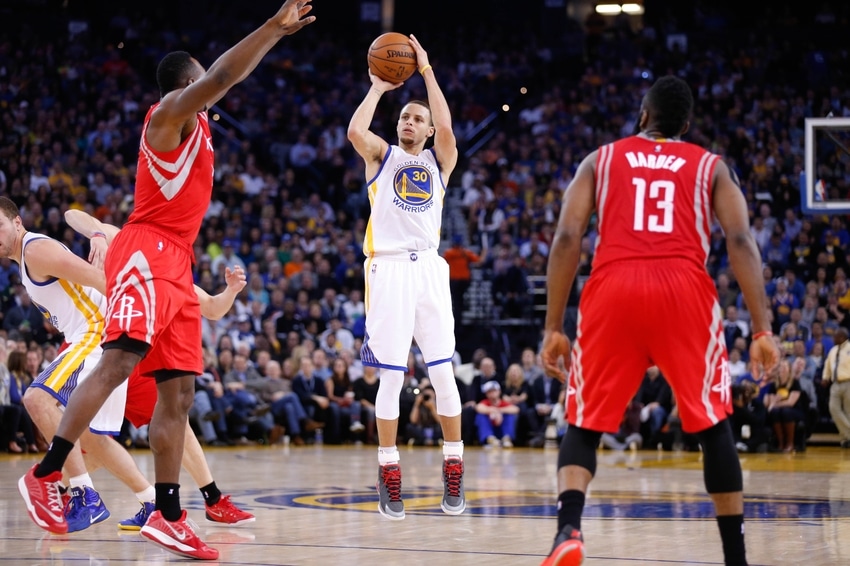3-Point Shooting Plays for Sharpshooters: Finding the Right Play
Three-point shooting has become a cornerstone of modern basketball, and having effective plays to get sharpshooters open is crucial for maximizing scoring opportunities.
Whether you’re working with elite shooters or developing players with potential, implementing 3-point shooting plays can greatly enhance your team’s offensive efficiency.
This article will cover fundamental 3-point shooting plays, their strategic benefits, and provide several effective examples to use in various game situations.
Understanding 3-Point Shooting Plays
1. Basic Concept:
- 3-point shooting plays are designed to create open looks from beyond the arc for players with strong shooting abilities.
- These plays typically involve screens, off-ball movement, and strategic positioning to free up shooters and generate high-percentage shots.
2. Key Objectives:
- Create open shots from beyond the arc by using screens and player movement.
- Exploit defensive mismatches and force defensive rotations.
- Maximize scoring potential by leveraging the shooting skills of key players.
3. Essential Skills:
- Accurate and quick shooting from the perimeter.
- Effective use of screens and movement to create separation.
- Good communication and timing between players to execute plays successfully.

2-Point Shooting Plays
1. Double Screen for the Shooter
Setup:
- Point guard at the top of the key.
- Shooting guard and small forward positioned on the wings.
- Power forward and center positioned in the low post areas.
Execution:
- The point guard passes to the shooting guard or small forward.
- The power forward and center set simultaneous screens for the shooter (usually the shooting guard or small forward) on the perimeter.
- The shooter uses the screens to get open beyond the arc.
- The ball handler passes to the open shooter for a quick 3-point attempt.
Tip: Ensure that the screens are set high and wide to create ample space for the shooter to receive the ball and get a clean shot off.
3. Elevator Screen Play
Setup:
- Point guard at the top of the key.
- Shooting guard and small forward positioned on the wings.
- Power forward and center positioned at the high posts.
Execution:
- The point guard passes to the shooting guard or small forward.
- The power forward and center move to the top of the key and set a staggered screen for the shooter.
- The shooter runs through the “elevator” created by the screens and receives a pass beyond the arc.
- The shooter takes the 3-point shot with a clear look.
Tip: The staggered screens create a tight space for the shooter to get free, making it more difficult for defenders to navigate through.
4. Flare Screen for the Wing Shooter
Setup:
- Point guard at the top of the key.
- Shooting guard and small forward positioned on the wings.
- Power forward and center positioned in the low post areas.
Execution:
- The point guard passes to the shooting guard or small forward on the wing.
- The power forward sets a flare screen for the shooting guard or small forward, who then moves towards the perimeter.
- The shooter receives the ball while coming off the screen and gets an open look from beyond the arc.
- The shooter takes the 3-point shot.
Tip: The flare screen is effective for creating open shots by forcing defenders to switch or fight through the screen, creating space for the shooter.
5. Corner Pick-and-Pop
Setup:
- Point guard at the top of the key.
- Shooting guard and small forward positioned in the corners.
- Power forward and center positioned at the high posts.
Execution:
- The point guard passes to the small forward or shooting guard in the corner.
- The power forward sets a pick-and-pop screen for the shooter, who then moves towards the top of the key.
- The shooter receives the ball from the point guard or a wing player and takes a 3-point shot.
- The other players provide spacing and potential passing options.
Tip: The pick-and-pop action creates a clear look for the shooter by forcing defenders to choose between covering the shooter or the screener.

6. High Pick-and-Roll with the Shooter
Setup:
- Point guard at the top of the key.
- Shooting guard and small forward positioned on the wings.
- Power forward and center positioned at the high posts.
Execution:
- The point guard initiates the offense and dribbles towards one side.
- The center sets a high pick for the point guard and then rolls to the basket.
- The shooting guard or small forward sets a pick for the point guard, who then passes to the open shooter.
- The shooter takes the 3-point shot with the added space created by the screens.
Tip: This play utilizes the pick-and-roll to create space and open looks for the shooter, taking advantage of defensive switches or mismatches.
7. Swing Pass to Open Shooter
Setup:
- Point guard at the top of the key.
- Shooting guard and small forward positioned on the wings.
- Power forward and center positioned in the low post areas.
Execution:
- The point guard passes to one of the wings (shooting guard or small forward).
- The wing player quickly passes to the opposite wing or corner while the other wing player sets a back screen for the shooter.
- The shooter moves to the open space and receives the ball for a 3-point shot.
- The ball handler can also drive if the defense collapses on the shooter.
Tip: The swing pass and back screen create a quick and effective opportunity for an open shot by moving the ball rapidly and using screens to free up the shooter.
8. Quick Pop and Shoot
Setup:
- Point guard at the top of the key.
- Shooting guard and small forward positioned on the wings.
- Power forward and center positioned in the low post areas.
Execution:
- The point guard passes to one of the wings.
- The power forward or center sets a quick screen for the shooting guard or small forward.
- The shooter pops out to the perimeter and receives a pass.
- The shooter immediately takes the 3-point shot.
Tip: This play relies on the shooter’s quick release and ability to get open with minimal time for the defense to react.
9. Double Stagger Screen
Setup:
- Point guard at the top of the key.
- Shooting guard and small forward positioned on the wings.
- Power forward and center positioned at the high posts.
Execution:
- The point guard passes to the shooting guard or small forward.
- Both high post players set staggered screens for the shooter, who runs through them to the perimeter.
- The shooter receives the ball and takes the 3-point shot with a clear look.
- The other players provide spacing and support for potential rebounds.
Tip: The staggered screens create multiple layers of separation, making it challenging for defenders to keep track of the shooter.
10. Dribble Hand-Off
Setup:
- Point guard at the top of the key.
- Shooting guard and small forward positioned on the wings.
- Power forward and center positioned in the low post areas.
Execution:
- The point guard dribbles towards one side and hands off the ball to the shooting guard or small forward.
- The ball handler sets a screen for the shooter, who then moves towards the perimeter.
- The shooter receives the hand-off and takes the 3-point shot with the added space created by the screen.
- The point guard or other players provide spacing and potential passing options.
Tip: The dribble hand-off creates a seamless transition for the shooter to get open while using screens to gain separation from defenders.
11. Catch-and-Shoot Play
Setup:
- Point guard at the top of the key.
- Shooting guard and small forward positioned on the wings.
- Power forward and center positioned in the low post areas.
Execution:
- The point guard passes to one of the wings.
- The shooting guard or small forward immediately receives a pass from the point guard and takes the shot with minimal dribbling.
- The other players position themselves to create spacing and clear passing lanes.
- The shooter should focus on catching and releasing the ball quickly for an efficient 3-point shot.
Tip: Quick catch-and-shoot plays are ideal for shooters who excel at getting their shot off rapidly with minimal dribbling.
3-Point Shooting Plays for Sharpshooters Conclusion:
3-point shooting plays are essential for leveraging the scoring abilities of sharpshooters and enhancing offensive efficiency. By using screens, strategic positioning, and effective movement, coaches can create open shots from beyond the arc and maximize their team’s scoring potential.
Mastering these plays will help your team adapt to various defensive schemes and make the most of your shooting talent.




